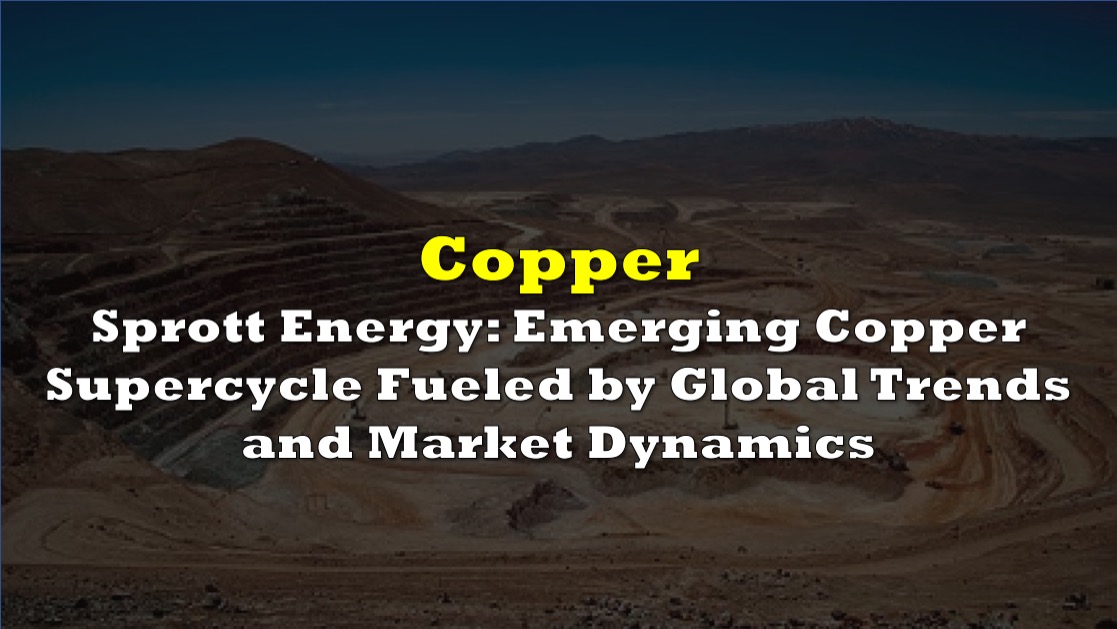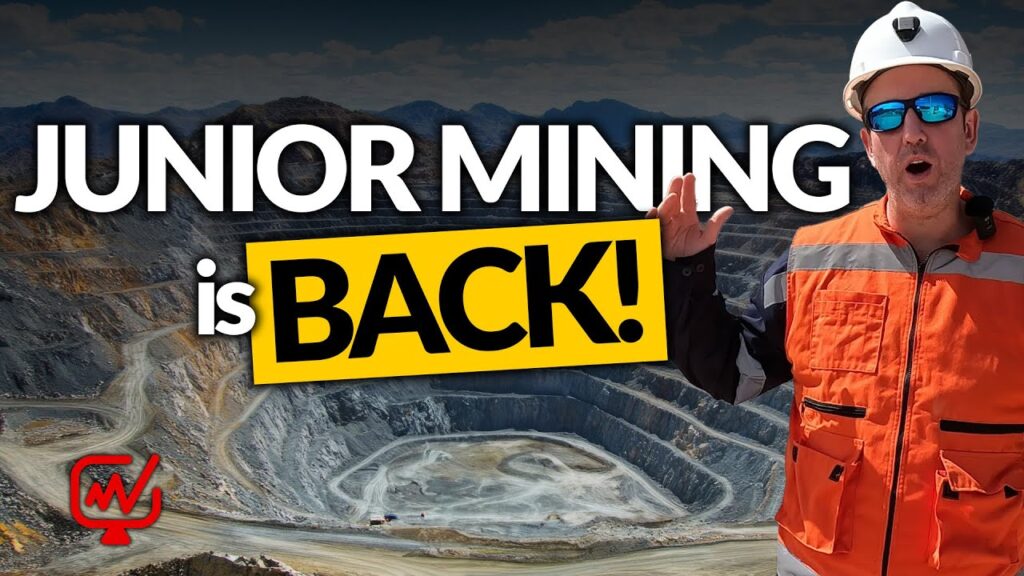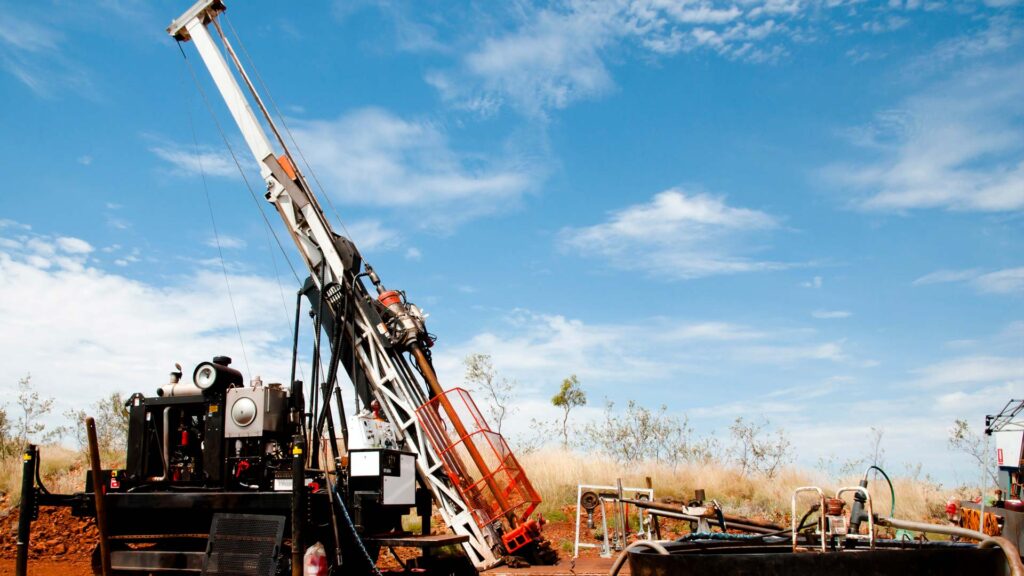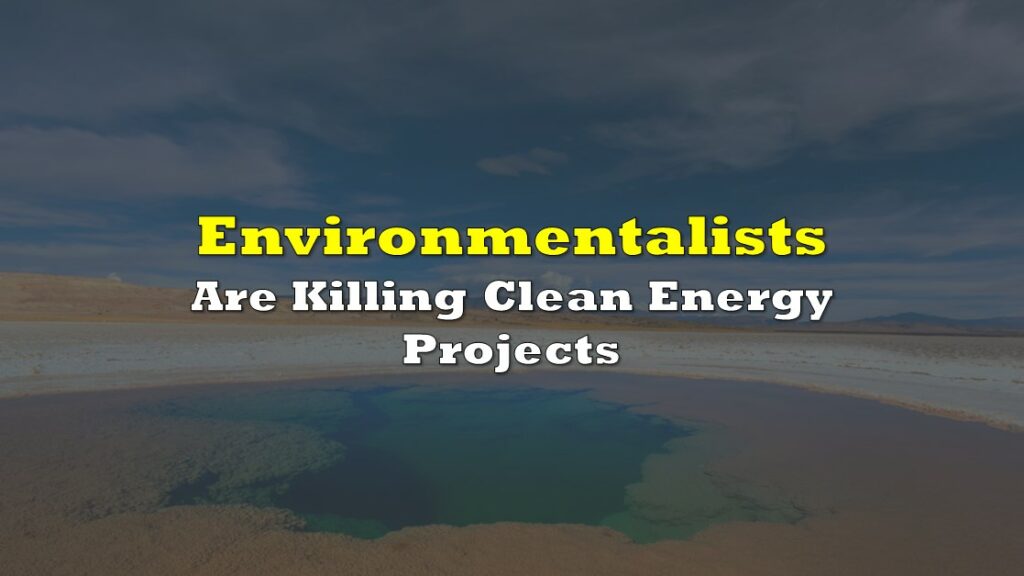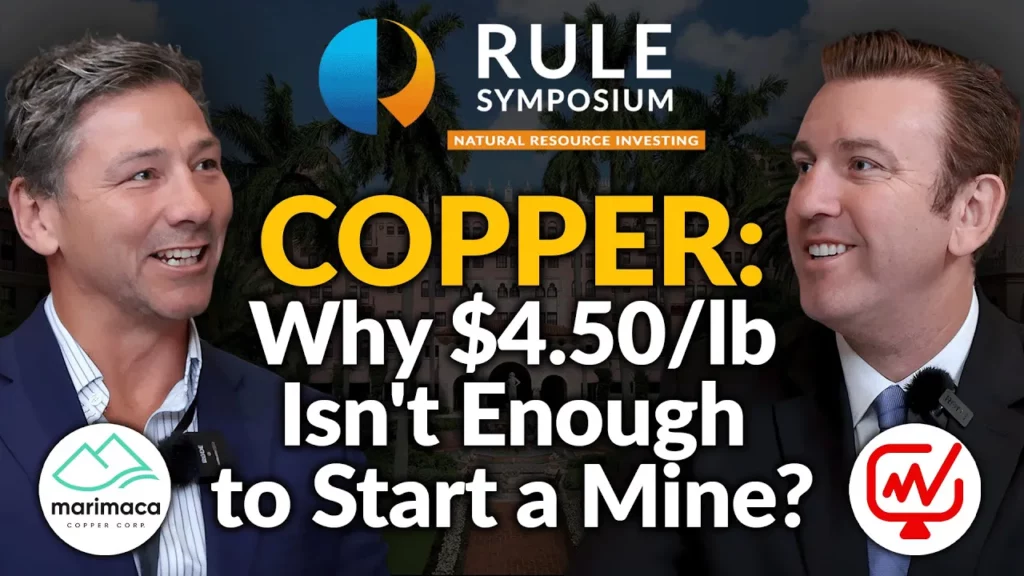A new supercycle is emerging in the copper market, driven by global trends towards clean energy and national security measures. The Nasdaq Sprott Energy Transition Materials Index (NSETM) has risen for three consecutive months, reflecting the increasing demand for copper and other essential materials. In May, the index climbed 6.35% to close at 1,082.71, continuing its breakout from a two-year consolidation phase.
“A new supercycle is emerging in the copper market, built on several rising geopolitical and market trends contributing to a strong bullish outlook for copper prices,” said analysts Paul Wong and Jacob White in Sprott Energy Transition Materials Monthly.

The drive towards clean electrical energy and protectionist policies are fueling an unprecedented surge in copper demand. Copper is critical for renewable energy infrastructure, such as electric vehicles (EVs) and solar panels. The metal’s demand is poised to increase significantly as countries strive for decarbonization and electrification.
“The global push towards clean electrical energy, coupled with protectionist moves by countries looking to secure vital materials, is driving an unprecedented surge in copper demand,” the authors added.
Despite rising demand, copper supply remains constrained due to years of underdevelopment, protectionist measures, and a preference among producers for mergers and acquisitions over greenfield development. New copper mines take over a decade to develop, facing stringent environmental regulations and community resistance.
The recent rebound in copper prices near all-time highs highlights the market’s recognition of long-term supply constraints. Treatment charges have plummeted, indicating tight market conditions. In May, copper spot prices rose 0.21% to $4.50 per pound, with mining stocks gaining 5.15%, culminating in a 33.79% year-to-date increase.
The U.S. has implemented bans and tariffs to reduce dependence on foreign imports, particularly from Russia and China. Measures include the Prohibiting Russian Uranium Imports Act and increased tariffs on Chinese steel, aluminum, and EVs. These actions aim to protect domestic industries and cut off revenue supporting Russia’s military activities in Ukraine.
“The protectionist policies are fundamentally driven by national and economic security concerns,” said an industry analyst. “They aim to reduce the import of materials seen as security risks and strengthen U.S. economic infrastructure amid rising geopolitical tensions.”
In May, BHP Group made and withdrew an unsolicited offer for Anglo American, highlighting the strategic importance of copper. The proposed $49 billion acquisition would have positioned BHP as a leader in copper production, reflecting the industry’s focus on securing high-quality assets through M&A.
Resource nationalism and stringent environmental regulations further complicate copper supply. Policies like the U.S. Inflation Reduction Act and the EU’s REPowerEU plan support green technologies and infrastructure investment. However, environmental challenges and community opposition can delay new projects, maintaining tight market conditions.
“The push for cleaner energy is driving demand for copper, but supply constraints are likely to keep prices elevated,” noted another market expert.
China’s economic slowdown has led to increased investment in renewable energy and AI, supported by government subsidies. However, China’s dual-speed recovery—with strong exports but weak consumer spending—complicates its economic outlook. As China shifts manufacturing to countries with easier market access, it continues to dominate the energy transition sector.
The authors suggest that the new supercycle, driven by global demand for clean energy and geopolitical factors, indicates sustained higher prices and increased market volatility.
“The combination of electrification, national security concerns, environmental policies, and supply constraints is creating a bullish outlook for copper,” they said.
Information for this story was found via Sprott and the sources mentioned. The author has no securities or affiliations related to the organizations discussed. Not a recommendation to buy or sell. Always do additional research and consult a professional before purchasing a security. The author holds no licenses.

